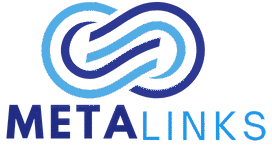The Thailand Privilege Membership program offers more than just long-term residency—it provides an elevated lifestyle designed for comfort, convenience, and luxury. As a member, you gain access to a range of benefits that make life in Thailand easier and more enjoyable, from exclusive airport services to luxury experiences across the country. But to truly enjoy the full value of your membership, it’s important to understand how to make the most of your privilege points, benefits, and available services. With the right approach, you can turn your membership into a gateway for seamless travel, premium leisure, and a worry-free stay in Thailand.Visit (long term visa thailand) for more details.
Understanding the Thailand Privilege Program
The Thailand Privilege program—formerly known as the Thailand Elite Visa—was designed to provide long-term residence privileges for foreigners who wish to live, work remotely, or travel frequently in Thailand. Memberships are available in several tiers, including Gold, Platinum, Diamond, and Reserve, each offering different durations, benefits, and point allocations. Members receive a multi-year visa and annual Privilege Points, which can be redeemed for a wide range of services and lifestyle experiences.
These points can be used for everything from immigration assistance and personal concierge services to wellness retreats and exclusive travel packages. Understanding how your membership level aligns with your lifestyle is the first step toward maximizing its value.
Make the Most of Your Privilege Points
Every Thailand Privilege member receives an annual allocation of Privilege Points, which serve as the key to unlocking experiences and services. The key to maximizing your points is thoughtful planning. Begin by identifying what you value most—whether it’s frequent travel, fine dining, health and wellness, or leisure activities—and allocate your points accordingly.
For example, if you travel frequently, use your points for airport fast-track services, limousine transfers, or concierge assistance. If you enjoy a relaxed lifestyle, consider redeeming points for golf club memberships, spa packages, or exclusive hotel stays. The program regularly updates its list of redemption options, so reviewing the latest catalog helps you stay informed and discover new experiences that fit your interests.
Take Advantage of Airport and Immigration Services
One of the most valuable perks of the Thailand Privilege membership is the smooth travel experience it provides. Members enjoy VIP airport services that include fast-track immigration clearance, dedicated lounges, and personal assistance upon arrival and departure. These benefits save time and eliminate stress, particularly during peak travel seasons.
Additionally, members can use their Privilege Points to book limousine transfers to and from the airport, ensuring a seamless journey from touchdown to home or hotel. By scheduling these services in advance, you can maximize convenience and make every arrival in Thailand as comfortable as possible.
Use Concierge Assistance to Simplify Daily Life
The concierge service is another underused benefit that can significantly enhance your day-to-day living experience. Whether you need help booking a restaurant, finding a medical specialist, organizing travel, or managing important appointments, the Thailand Privilege concierge is available to assist. Using this service saves time, helps you navigate local processes with ease, and gives you access to reliable recommendations.
Members can also rely on the concierge team for administrative assistance, such as renewing driver’s licenses, managing visa-related appointments, or arranging translations. Taking full advantage of this personalized support allows you to focus on enjoying life in Thailand instead of dealing with logistics.
Explore Lifestyle and Wellness Experiences
Thailand is known for its world-class wellness culture, and your membership opens doors to many of the country’s best spas, fitness clubs, and health retreats. Many packages available through the Privilege Points system offer special discounts or complimentary services at leading wellness centers and hotels.
If you are passionate about golf, your points can also be used for green fees at some of Thailand’s most prestigious golf courses. Alternatively, if you enjoy cultural or culinary experiences, you can redeem points for fine dining events, resort stays, or cultural tours. The variety of redemption options ensures that every member can tailor their experience according to their personal interests.
Stay Updated and Engage with the Member Community
To get the most from your membership, stay informed about new offers and program updates. The Thailand Privilege team frequently introduces new partnerships and seasonal promotions, which can add even greater value to your points. Subscribing to the official newsletter or following the member portal ensures you never miss exclusive opportunities.
Engaging with other members through official events or online communities can also enrich your experience. Sharing tips, recommendations, and insights helps you discover hidden benefits and build a network of like-minded individuals who share your appreciation for Thai culture and hospitality.
Enjoy the Full Value of Your Membership
The Thailand Privilege Membership is more than a visa—it’s an invitation to experience Thailand at its best. By actively managing your Privilege Points, utilizing concierge and airport services, and exploring lifestyle rewards, you can enjoy a seamless, luxurious life that few other programs can match.
Whether you are a long-term resident or a frequent traveler, understanding and maximizing the perks of your membership ensures that every moment in Thailand is filled with comfort, convenience, and unforgettable experiences. With a little planning and curiosity, your Thailand Privilege membership can become your personal gateway to a truly elevated way of living in the Land of Smiles.Visit (long term visa thailand) for more details.










